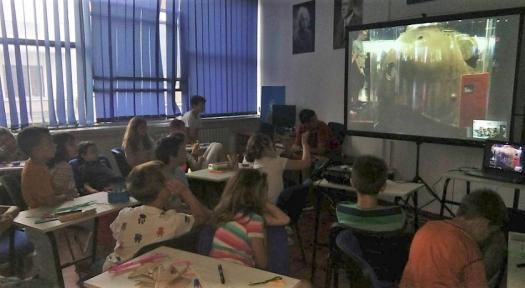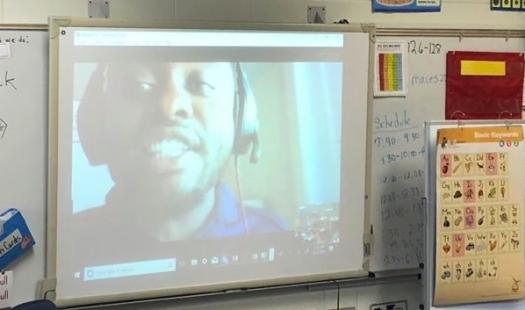230,000 virtual miles later, students abound in their learning of air, space and sea

In December 2017, the Society announced that the Intrepid Sea, Air & Space Museum in New York would be the recipient of a $5,000 STEM Action Grant. We previously wrote about what their distance learning opportunities entail. This is an addendum, with updates on what the Museum accomplished by the end of the grant period in 2018.
The Intrepid Sea, Air & Space Museum is often listed as one of the top spots to check out in New York City. They seem to have something for everyone—for adults and children alike. From free admission Fridays to screenings of Dunkirk on the flight deck, the Intrepid makes it a point to engage the community. With a keen awareness that some just might not be able to check out the offerings in person, in 2016, they created a program called Virtual Field Trips—specifically for those who are unable to visit the museum physically.

With the Society’s STEM Action Grant, the Museum has delivered a total of 153 Virtual Field Trips to 5,345 students in 13 countries across 4 continents in 2018! The funding also enabled the Museum to train four new educators and purchase new equipment, such as iPads and headsets, increasing their capacity to offer more programming. The Museum has had two popular Virtual Field Trip programs, Space Science and Aviation Science, and now a third has been added with the STEM Action Grant. In 2018, they successfully created and piloted a new Water Science program.
Virtual Field Trips are conducted directly from the Museum floor, enabling staff to provide tours of the museum to visitors from all over the world. Students, like those from a recent group in Puerto Rico, imagine themselves right in front of the very aircraft their educators are discussing. “Weeks before the scheduled program, Puerto Rico was devastated by two hurricanes, leaving much of the island without power. However, a brave group from Guaynabo gathered technology and students together to participate in a Virtual Field Trip. It was amazing to see the students so eager to learn in the midst of what was happening around them,” said Erin Phillips, Director of Grants and Foundation Relations.

This past year alone, Museum staff traveled 230,000 virtual miles. Clearly, the Intrepid is breaking the geographic and socioeconomic barriers that prevent individuals from traveling to the Museum in-person. They have welcomed children from grades K–12, individuals with special needs and English language learners through this innovative programming. In 2018, the Museum further diversified the populations it serves by partnering with Selfhelp Community Services to bring interactive STEM experiences to another demographic—the elderly. One hundred home-bound seniors across the U.S. benefited from the new partnership. This expands on the numerous features the Museum already offers for individuals with dementia and their caregivers. With Virtual Field Trips, seniors not able to visit the Museum in-person gain access to multi-sensory experience tours designed to spark conversation and reflection.
Looking ahead, the Museum plans to engage more participants in Europe and Africa so more students can learn about aviation, space and water science through the context of the Museum’s collection.


